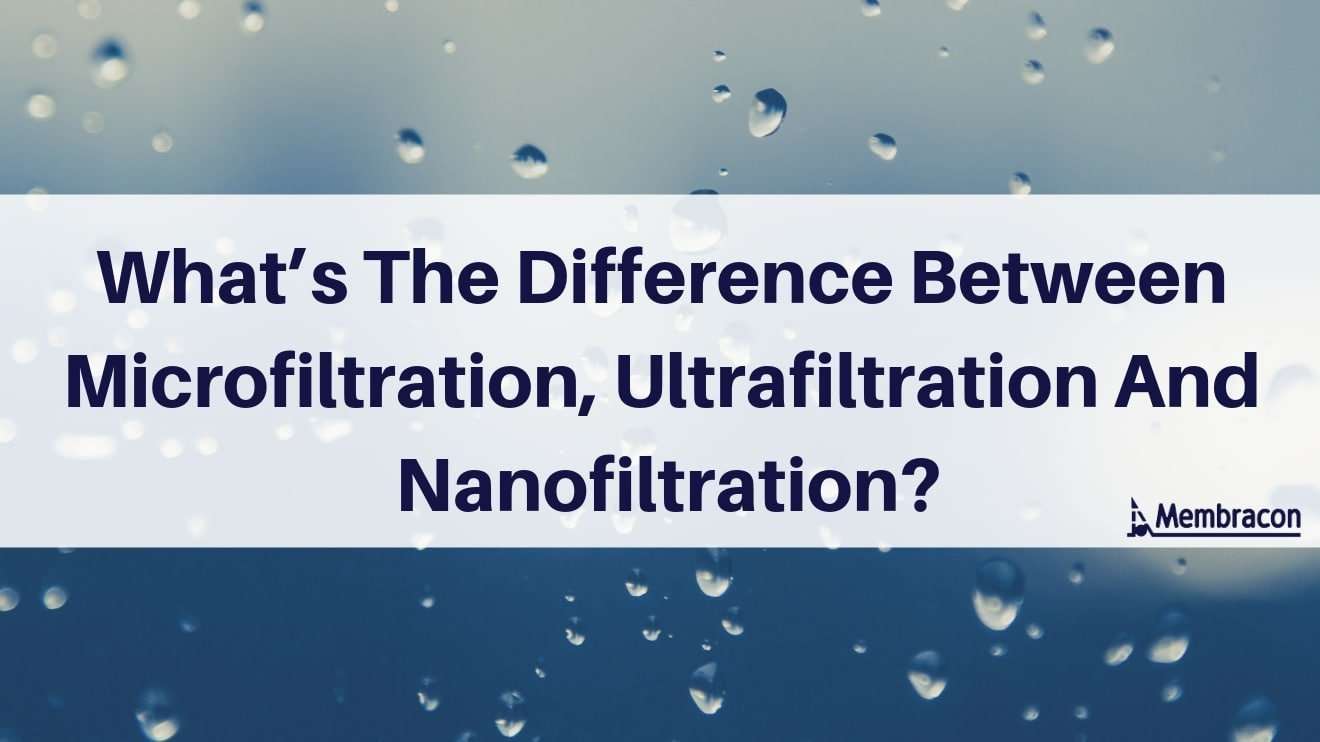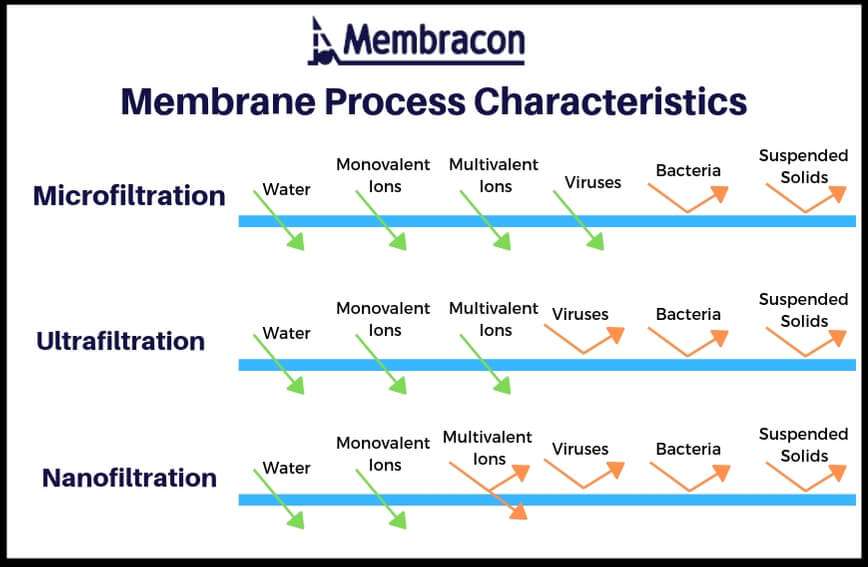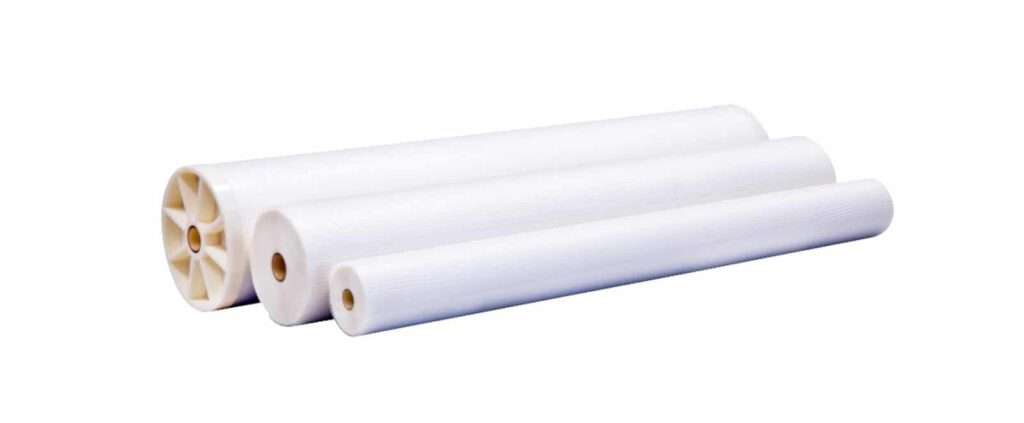
What’s The Difference Between Microfiltration, Ultrafiltration And Nanofiltration?
The main difference between microfiltration, nanofiltration and ultrafiltration is the pore size of the membrane. With each different filtration process a variety of elements get either blocked or pass through with the water. Below is a diagram to demonstrate this.
Download The Ultimate Guide To Industrial Water Filtration

Reverse osmosis is the only water filtration procedure to remove all elements completely, leaving just pure water, proving popular in the pharmaceuticals sector.
Each filtration process has the same procedure, water passes through a semipermeable membrane, depending on the pore size certain elements are removed whilst others pass through.
The correct filtration process is selected specifically for your individual water issue.
What Is Microfiltration (MF)?
Microfiltration is the process of physically removing suspended solids from water, through a membrane. Microfiltration is often used in conjunction with other separation processes such as ultrafiltration and reverse osmosis.
The filters used in microfiltration have a pore size of approximately 0.1 micron (small). Bacteria and suspended solids are the only element that can be removed through microfiltration.
A typical use for a ultrafiltration system can be:
- A pre-treatment for another water treatment process
- Certain types of effluent treatment
- Certain oil and water separation applications
- Treat wastewater
- Sterilizing beverages and pharmaceuticals without sacrificing flavour
- Processing dairy products while allowing protein through
What Is Ultrafiltration (UF)?
Ultrafiltration blocks everything microfiltration can with the addition of viruses, requiring a slightly higher pressure to achieve this.
Although it requires higher pressure than MF, ultrafiltration can be powered by the pressure you get from the tap, making it popular in the commercial sector for drinking water.
It works the same way as MF by which a contaminated liquid passes through a membrane that is too large to fit through the membranes pore sizes, yielding a purified liquid stream.
Ultrafiltration filters have a pore size of approximately 0.01 micron (smaller).
UF can be used in the following processes:
- Treating wastewater
- Concentrating proteins
- Chemical process separation
- Separating oil/water emulsions
- Removing pathogens from milk
- Clarifying fruit juices
What Is Nanofiltration (NF)?
Nanofiltration membranes typically remove 50% – 90% of monovalent ions such as chlorides or sodium.
The design and operation of the filters used in NF are very similar to that of reverse osmosis, with some differences. Those being the membrane isn’t as ‘tight’ as RO membranes and a lower feedwater pressure is required.
Nanofiltration filters have a pore size of approximately 0.001 micron (smallest).
It has attained the name of the ‘softening membrane’ as it is often used to filter water with low amounts of total dissolved solids, to remove organic matter and to soften water.
NF can be used in the following processes:
What’s The Difference Between Micro, Nano And Ultra Filtration?
Ultimately they all do the same job but remove different elements depending on the water issue and the industry using it.
The pore size of the semipermeable membranes used is the only major difference between microfiltration, nanofiltration and ultrafiltration.
The different pore sizes allow for different elements allowed to be passed through, giving ultimate precision to treating your wastewater issue correctly and safely for the environment.
To remove all impurities all together, reverse osmosis is used. With tighter regulations, and the many benefits it has, RO is becoming increasingly popular in the industrial sector.

Conclusion
Dependent on your water issue, microfiltration, ultrafiltration and nanofiltration may be used to purify and help you manage and treat your wastewater.
Each water issue is treated separately and a bespoke system is designed and built to reach the quality of water you want to achieve for your process.
A combination of more than one system is common to achieve such a precise quality of water where regulations are tighter.
The first step to achieving your water solution is to understand the issues within your water. Membracon offer a free water analysis test to help you with this process, combined with expert knowledge to help and advise you through your project.

